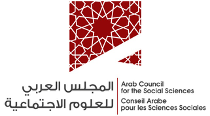Components of a Humanities/Social Sciences Research Proposal


The Training to Engaged Research Group
in partnership with
The Arab Council for the Social Sciences
COMPONENTS OF A HUMANITIES/SOCIAL SCIENCES RESEARCH PROPOSAL
Funded by a generous grant from the Foundation to Promote Open Society
![]()
Proposal Writing Workshops
Suad Joseph
University of California, Davis
COMPONENTS OF A HUMANITIES/SOCIAL SCIENCES RESEARCH PROPOSAL
The basic components of research proposals are the same in humanities and social sciences. How they are phrased and staged varies by discipline and by funding agency. The questions posed below are required by most agencies in some form. If you answer the “maximal” components below, you should be able to write proposals for most funding agencies. The components may seem more “social science” than “humanities”, but in fact, humanities funders ask the same questions, sometimes using different language. Decode the language for your discipline. Keep in mind, many agencies are interdisciplinary in their funding and have interdisciplinary review panels. Follow the guidelines of your funding agency, answer the questions the funder poses, and use the funder’s language for the components described below.
I. Statement of the Problem (the questions you are trying to answer)
First paragraph or first page gives a brief summary of the whole project including:
A. Statement of Problem / Statement of Question / Statement of Project Objective
1. State objectives / what you intend to do / the questions you will answer
Every project seeks an answer to a question. The clearer the question, the more convincing the project
a. Analytical, problem solving, hypothesis testing
Ex: Test the hypothesis that the higher the level of education, the more positive are attitudes towards women’s rights among men between 20-50 in Cairo, Egypt
Ex: Explain why the French Revolution limited democratization in municipal institutions (Ted Margadant* UCD History, by permission)
b. Descriptive
Ex: Identify the differences in representations of father/son and mother/son relations and in Naguib Mahfouz’s Palace Walk
Ex: Compare the materialist orientations towards geography in the Roman Empire to the symbolic/metaphorical orientation towards geography by early Christian writers (Brenda Schildgen* UCD Comp. Lit. by permission)
2. Objectives should be:
a. specific, concrete [you & others can attain them and agree they have been attained]
b. researchable [Question can be answered in reasonable time with reasonable funds]
c. measurable [Specify the criteria by which you will know you have found what you are looking for. Humanities note: criteria may but need not numerical.]
3. Statement of objectives should be:
a. declarative ( I will measure levels of education and attitudes towards women’s rights among men... / I will identify the continuities and discontinuities in their representation of father/son and mother/son relations in Mahfouz’s Palace Walk.
Not: If I get funds, I will…)
b. prioritized – listed in order of priority. If you have more than one objective, question to answer, the priority will determine the rest of the proposal. The review of literature, theoretical framework, hypothesis, methodology, reflect the same ordering
B. What you expect to find / answer to the question / results to be reached / hypothesis
1. Builds on respected theory / research
2. Offers plausible alternative to respected theory / research
3. Your point of departure needs to be utterly clear
Ex: your point of departure is: the impact of level of education on…
Ex: your point of departure is: what explains attitudes towards women’s rights…
Ex: your point of departure is: describing how father/son vs. mother/son relations are represented.
Ex: your point of departure is: explaining why there are differences in representation of father/son vs. mother/son relations in Egyptian literary culture.
Ex: your point of departure is: explaining Mahfouz’s relationship to his father vs. his mother (as a semi-autobiographical text).
Ex: your point of departure is: describing the gendering of representational forms.
Ex: your point of departure is: demonstrate that Christian geography was not anti-scientific
Ex: your point of departure is: shattering the illusion that geography is static & fixed
Ex: your point of departure is: analyzing social order through analysis of institutions and practices of criminal justice
Ex: your point of departure is: documenting the limits of revolutionary change
C. Other answers, Need, Theory, Significance, Site
Summary of state of the art, why research is needed, why your answer is better, why research is important, where it will be conducted
D. Summary of Proposal
One paragraph summary of question, answer, relevant literature, the need for this research; your theoretical framework, hypotheses; locale, population to be studied, research site; significance of the research.
II. Review of the Literature (how the questions have been answered before)
A. Summarize only the relevant research, key paradigms, models, theories, approaches
B. Identify the limitations of past research on the question
C. Specify the positive contributions of previous research on which you will build
D. Review should be synthesizing; show the themes in the literature; do not summarize at length any one piece unless it is the dominant paradigm; demonstrate control of scholarship; do not quote; be highly selective in references cited
III. Statement of Need (why answering these questions is important)
A. Build on limitations cited in literature review; indicate that your research will overcome those limitations.
Ex: There are contradictory explanations of "X" which you will resolve.
Ex: The methodologies for resolving "X" are inadequate; your research will produce a superior methodology
Ex: No research has been conducted on "X"– your research fills a significant gap in scientific knowledge.
Ex: No research has tested this explanation of “X”. You will provide the test. Ex: No research has observed these patterns, these representations, these relationships. You will describe, explore, analyze newly observed patterns, representations, relationships.
Ex: The previous research is excellent, foundational, you will refine, advance
IV. Statement of Significance of this Research (why the answers to the questions are important and therefore why proposal should be funded)
A. Demonstrate how this research goes beyond limitations of existing works
B. Should be a synthesis of problem statement and review of literature
C. Show significance of each item listed in objective and in that order
D. Significance can be advancing theory, offering application to critical social problems, filling a critical void in a field of knowledge, opening new ways of thinking about an area of investigation.
V. Theoretical Framework (why you answer the questions that way; justify your answer)
A. Clearly outline the theory, model, perspective, or conceptual framework from which you will generate the answer to the question (hypothesis for social scientists).
1. This should be written as your position.
2. Identify where you build on others and where you differ.
3. Define all terms necessary to the theoretical framework and the answer to the question (hypotheses). Definitions should allow you to operationalize the terms. This means that you establish the criteria (measurement) by which you know that you have found what you are looking for so that the research findings can be clearly recognized, identified, and evaluated to produce the answer. Measurement means you have clear criteria for knowing you have found what you think you have found.
B. Statement of Hypotheses (projected answers to the questions).
1. Hypothesis is a statement of a relationship between at least two variables. Variables are the different agents which are answered or help answer your question. The hypothesis indicates a process, change.
Ex: If "z" happens to 'Y' then "w" happens to "y"
Ex: As level of education increases among men between 25-50 in Cairo, a positive attitude towards women’s rights increases.
2. Variables must be identifiable, operationalizable.
3. Change must be identifiable, measurable.
4. Hypothesis should be ordered in same sequence as objectives.
C. Optional: Statement of Alternative Hypotheses (the competing answers)
1. Research (science) never conclusively answers question; it only increases the probability of one answer by eliminating competing explanations.
2. Thus a hypothesis must be falsifiable.
3. State dominant alternative hypotheses concerning the relationship between the variables you are investigating (how others have answered the questions).
4. Order these in same sequence as objectives and hypotheses.
VI. Method/Design (how you will achieve objectives, answer the questions)
A. Specify research site.
1. Justify choice. Show how the “where/what” fits problem situation, maximizes possibility of controlling research information, allows you to answer the questions.
2. Show how all objectives of research can be met in the “where/what”, in order of priority of objectives.
3. Review literature on that where/what – population, site, archives, texts…
4. Enumerate skills you have, information, contacts, experience in relationship to population/site that makes this a good choice.
a. Ex: language skill
b. Ex: have contacts with local government or university which you will gain your entry into the research site
c. Ex: have done research there before
B. Specify kinds of data / research information needed
1. Data should constitute information that will allow you to answer the questions.
2. Show that data / research information will answer all questions listed in problem
C. Methods
1. Techniques, instruments, data-gathering methods.
2. Ex: surveys, questionnaires, participant observation, content analysis, close reading, archival searches (discipline specific)
3. Explain how these techniques will produce information to answer questions
4. Indicate how techniques are related to questions and expected answers
5. Order in same sequence as objectives
D. Validity
1. Internal
a. Tests measure what they say they will measure
b. Ex: use pre-tests, post-tests, control groups, work of other researchers
2. External
a. Procedures can be repeated by your or others and produce the same results
b. Generalizable – can be applied to others situations with same conditions
E. Analysis of Data (using the research information to answer the questions)
1. Procedures that will be used to transform raw data into answers to the question.
2. Methods of reading / interpreting research information
3. Be specific. Show that procedures will produce answers to full lists of questions, objectives, hypotheses, from the raw data
VII. Time Table (how long it will take to achieve the objectives, answer the questions)
A. Anticipated schedule by days, weeks, months.
1. Include pre-research preparations if you want to be paid for it. a. Ex: Language training
Ex: Archival work
2. Include consultation time.
3. Include time for data analysis.
B. Should parallel list of objectives and cover all objectives.
C. Be reasonable and precise.
VIII. Budget (how much it will cost to answer the questions)
A. List all personnel salaries, including yourself.
B. Include: equipment, computers, photo/video equipment, supplies, travel, training time,insurance, visas, per diem for special trips, medical supplies, fees to informants, gifts to informants or other research related personnel, car or other local transportation, permits and costs of gaining access to research facilities, research assistants/consultants, photocopying, later reproduction or dissemination costs, translation into local language, permits to use archives, purchase texts, indirect costs to university (varies by agency)
C. Consider inflation.
D. Justify budget in relation to method/design.
XI. Abstract
A. Brief statement of research question, objectives, answer, significance.
B. Short, powerful, attention-getting.
C. Usually repeats the first paragraph of Problem Statement
X. Vitae
A. Short, focus on the background and skills that qualify you to do this research.
B. Vitae of other personnel on the project.
XI. Bibliography
A. List only references sited.
B. Keep short, but complete. Include literature that one must know to do this project